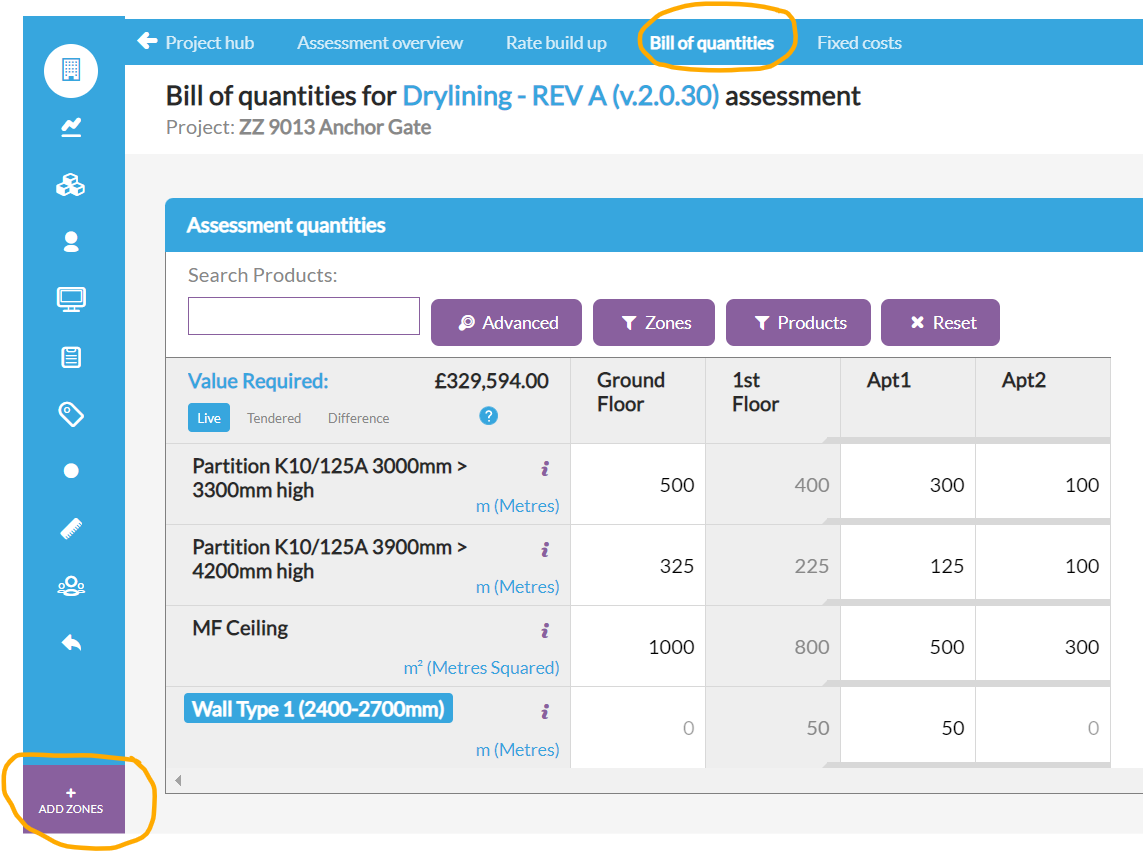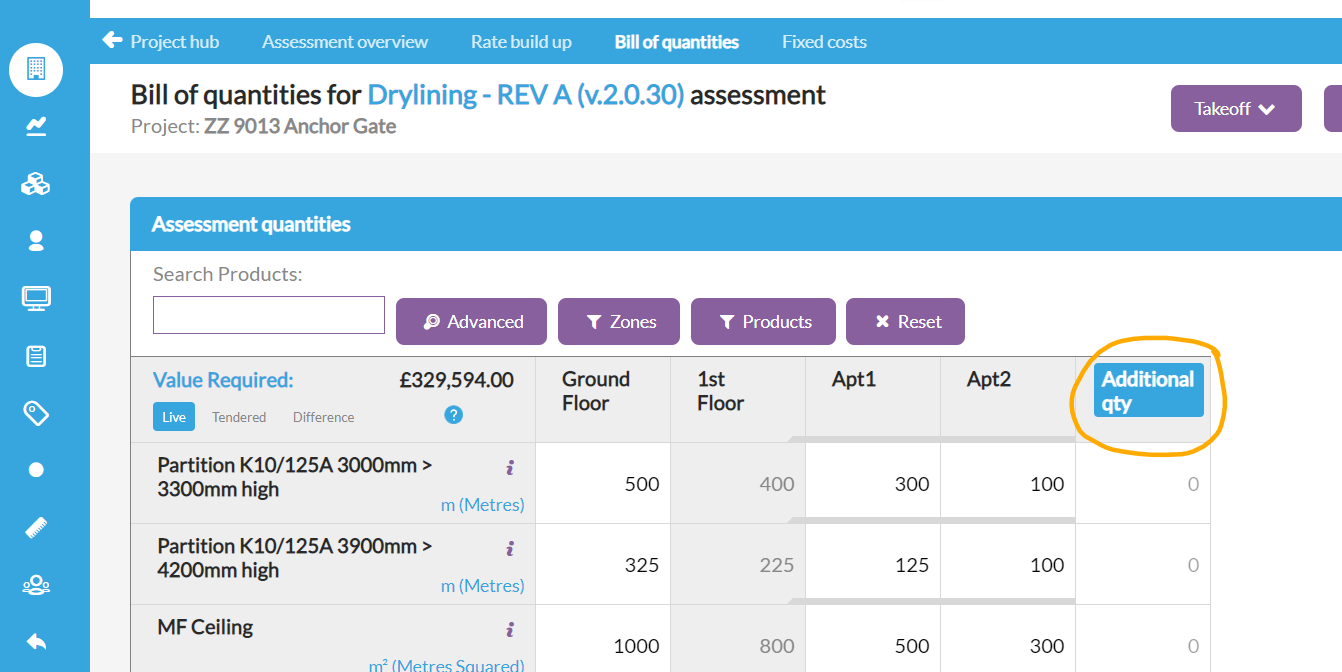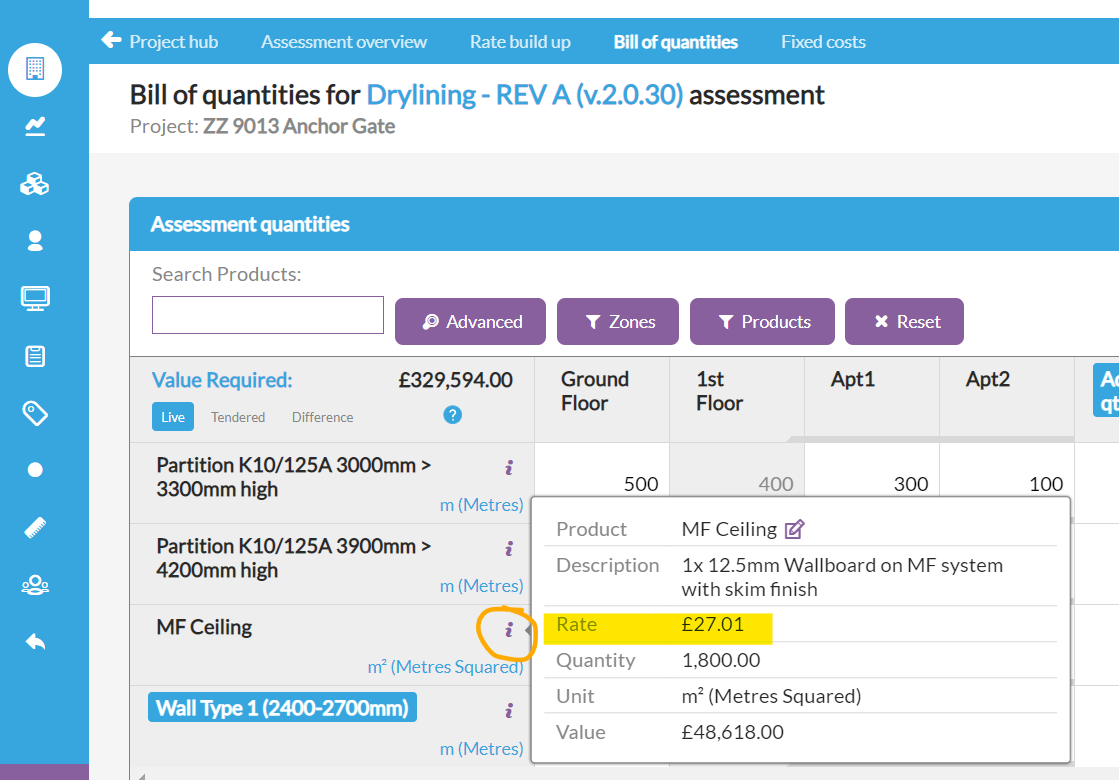In this article:
- What is a lump sum assessment?
- When to use variation zones
- How to add a variation zone
- Rates used for variation zone quantities
- Want to know more?
What is a lump sum assessment?
Under a lump sum contract, a single 'lump sum' price for all the works is agreed, prior to those works commencing.
For more details of considerations when working with lump sum contracts refer to this article:
Unlike with a re-measure contract, because the scope of a lump sum contract is agreed in advance, Chalkstring has some checks and constraints in place to manage and restrict certain types of changes to these lump sum asssessments.
One of these restrictions is around adding new zones to lump sum assessments. If you need to add further scope to the project you can add a new zone and it will be flagged as a 'variation'.
When to use variation zones
Variations zones can be used when:
- you need to do additional measured works for existing items in the contract and want to be able to charge the client for them
- you agree that work is no longer required or the measure has been reduced for existing items in the contract and you wish to pass on the savings to the client
- you need to add new items of work in new areas of the build and want to track those quantities in a separate zone or zones
How to add a variation zone
To add a variation zone:
- Open the Project hub for your project (using the blue button in the project list) and navigate to your assessment (click the name of the assessment in the top blue menu bar of the project hub)
- Click the Bill of quantities option in the top blue menu bar
- Click the Add Zones button in the bottom left corner of the screen

- Add a name for your new zone, and click the Create Zone button to save your changes.
- Your new zone will be created and flagged in blue as a variation.

- Enter quantities for any relevant products.
Rates used for variation zone quantities
When you add quantities to a variation zone for an existing product, the rate used on the application for payment for those items will be the Tendered rate.
Viewing the rate
If you have not made any adjustments to the quantities in the original zones on the contract then this rate will show as follows when you click the 'i' icon for the product:

If you have made changes to the quantities in the original zones on the contract then you will see two rates as shown below:

In this example the quantities have been increased in one or more of the original contract zones. These increases in quantity have not been passed on to the end client and the cost of them is being absorbed into the project costs.
This means that although the original Tendered rate was £218.95 per metre, because of the increase in quantity the Effective rate is now reduced to £199.05 per metre. The Effective rate is an internally used figure to show the net rate now being earned per metre after the adjustments.
In this example, any quantities added to a variation zone for this product would be charged at the Tendered rate in the application for payment.
Want to know more?
- Lump sum considerations
- How to add and structure a variation
- How to do negative variations
- How to make variation adjustments to the contract scope (add & omit)
